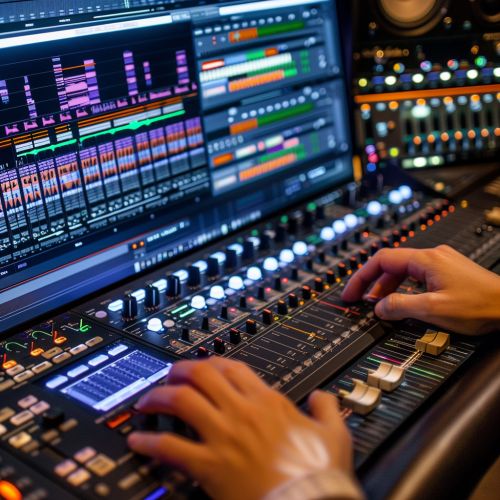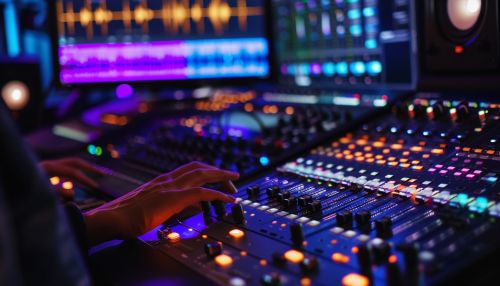Audio Editing
Introduction
Audio editing is the process of manipulating and rearranging audio files to achieve a desired outcome. This can involve a wide range of tasks including cutting, splicing, mixing, and applying various effects to audio tracks. Audio editing is a critical component in various fields such as music production, film, television, radio, and podcasting. This article delves deeply into the technical and creative aspects of audio editing, providing a comprehensive overview for both novice and expert users.
History of Audio Editing
The history of audio editing dates back to the early 20th century with the advent of magnetic tape recording. Early audio editing was a labor-intensive process involving physical cutting and splicing of tape. With the development of digital technology in the late 20th century, audio editing transitioned to digital audio workstations (DAWs), which allowed for more precise and efficient editing capabilities.
Digital Audio Workstations (DAWs)
Digital Audio Workstations are software platforms used for recording, editing, and producing audio files. Popular DAWs include Pro Tools, Ableton Live, and Logic Pro. These platforms offer a range of tools and features that facilitate complex audio editing tasks. DAWs typically support multiple tracks, allowing users to layer different audio elements and apply various effects.


Basic Audio Editing Techniques
Cutting and Splicing
Cutting and splicing are fundamental techniques in audio editing. Cutting involves removing unwanted sections of an audio track, while splicing involves joining two or more audio segments together. These techniques are essential for creating seamless transitions and removing errors or unwanted noise.
Crossfading
Crossfading is a technique used to smoothly transition between two audio tracks. This is achieved by gradually decreasing the volume of one track while simultaneously increasing the volume of another. Crossfading is commonly used in music production and radio broadcasting to create smooth transitions between songs or segments.
Time Stretching and Pitch Shifting
Time stretching involves changing the duration of an audio clip without affecting its pitch. Conversely, pitch shifting changes the pitch of an audio clip without altering its duration. These techniques are useful for matching the tempo and key of different audio elements in a project.
Advanced Audio Editing Techniques
Equalization (EQ)
Equalization is the process of adjusting the balance of different frequency components within an audio signal. EQ can be used to enhance or reduce specific frequencies, thereby shaping the overall sound of the audio. This technique is crucial for achieving a balanced mix and ensuring clarity in the final output.
Compression
Compression is a dynamic range processing technique used to reduce the difference between the loudest and quietest parts of an audio signal. This helps to maintain a consistent volume level and prevent distortion. Compression is widely used in music production, broadcasting, and podcasting.
Reverb and Delay
Reverb and delay are effects used to create a sense of space and depth in an audio track. Reverb simulates the reflections of sound in a physical space, while delay creates echoes by repeating the audio signal at specified intervals. These effects are commonly used to enhance vocals and instruments.
Audio Restoration
Audio restoration involves the process of removing imperfections from audio recordings. This can include tasks such as noise reduction, click and pop removal, and de-humming. Advanced algorithms and tools are used to analyze and repair damaged audio, making it suitable for archival and commercial use.
Surround Sound Editing
Surround sound editing involves working with multi-channel audio to create an immersive listening experience. This is commonly used in film and television production to place audio elements in a three-dimensional space. Techniques such as panning and spatialization are used to position sounds accurately within the surround sound field.
Legal and Ethical Considerations
Audio editing often involves the use of copyrighted material, making it essential to understand the legal and ethical implications. Editors must ensure they have the necessary permissions and licenses to use and manipulate audio content. Additionally, ethical considerations such as maintaining the integrity of the original work and avoiding misleading edits are crucial.
Future Trends in Audio Editing
The field of audio editing is continually evolving with advancements in technology. Emerging trends include the use of artificial intelligence and machine learning to automate complex editing tasks. Additionally, immersive audio formats such as Dolby Atmos and binaural audio are gaining popularity, offering new possibilities for creative expression.
